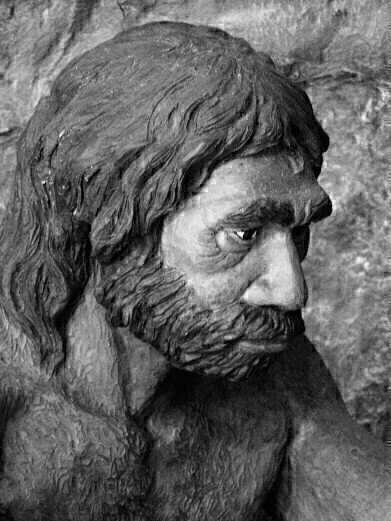GC, MDGC
Did Neanderthals Eat Vegetables?
Oct 02 2014
By studying remains and analysing clues, scientists have revealed a great deal of insight about our extinct human ancestors, Neanderthals. They had short, stocky bodies, a large nose and prominent faces. They made tools, wore clothing and used fire. There is even evidence that they performed rituals - burying their dead and marking graves with flowers. But up until recently, the question of diet was a relative unknown.
At one time, scientists held the belief that Neanderthals were purely carnivorous - an idea that helped to explain why they were wiped out, while the more adaptable Homo Sapiens species flourished. However, in light of recent studies, it seems that much like their ancient human cousins, Neanderthals were in fact omnivores. But what evidence do we have to suggest that they actually ate vegetables?
Evidence for an omnivorous diet
Up until recently, the only evidence of an omnivorous Neanderthal diet was the discovery of plant remnants in the teeth of ancient remains. But this left too much room for interpretation: were they using their teeth as tools to gnaw through obstructive vegetation? Was it used for medicinal rather than nutritional purposes?
The evidence for eating vegetables has now gone one step further - proving that Neanderthals actually consumed plant matter. At a site known as El Salt in Alicante, Spain, a team from Massachusetts Institute of Technology and the University of La Laguna discovered traces of vegetables in the oldest human excrement ever identified.
Using gas chromatography to separate and analyse chemicals in the 50,000 year old samples, the scientists isolated specific molecules and their quantities. This confirmed the remnants as fossilised faeces, due to the concentration of a substance known as coprostanol. Using this technique they were actually able to take an important leap further by identifying phytosterol - a compound found in plants - in two of the samples.
According the researchers, this level of plant intake would not have been accidental. It would take a significant amount of vegetation for metabolised phytosterol to be found in faeces, indicating that ingestion of vegetables was conscious and deliberate. While scientists do not dispute that Neanderthals enjoyed a largely meat-based diet, this evidence shows that it was in part supplemented by plants such as berries and nuts.
What next for researchers?
While Neanderthals near the El Salt site in Spain certainly ate vegetables, it remains to be seen whether plant-consumption was the norm among wider communities. Most scientists agree that Neanderthals probably ate what was available, according to location, season and climate. Their behaviour and diet may have adapted to their surroundings and situation - so it is difficult to speculate on the diet of every populace without the discovery of further evidence.
More Discoveries
Chromatography is at the heart of many intriguing analyses, many of which you can read about here. For example, did you know that chromatography can be used to analyse space dust, determine the age of mummies and even determine if money is smuggled or not. Amazing!
Image Source: Neanderthal
Digital Edition
Chromatography Today - Buyers' Guide 2022
October 2023
In This Edition Modern & Practical Applications - Accelerating ADC Development with Mass Spectrometry - Implementing High-Resolution Ion Mobility into Peptide Mapping Workflows Chromatogr...
View all digital editions
Events
Apr 28 2024 Montreal, Quebec, Canada
May 05 2024 Seville, Spain
May 15 2024 Birmingham, UK
May 19 2024 Brno, Czech Republic
May 21 2024 Lagos, Nigeria














